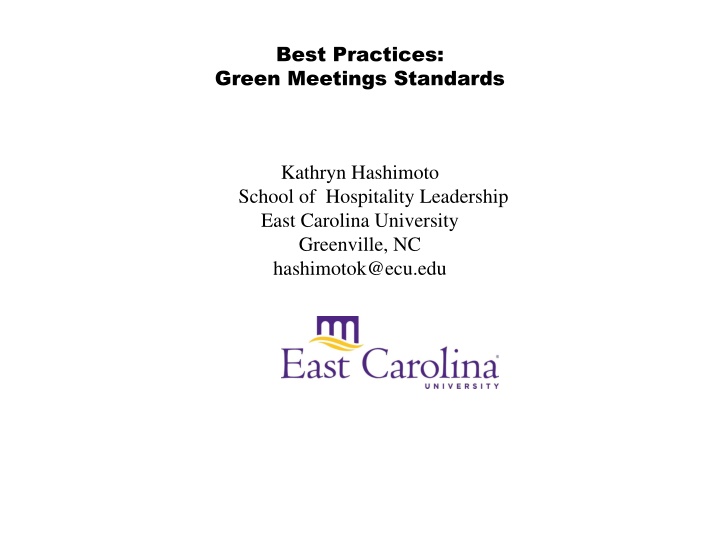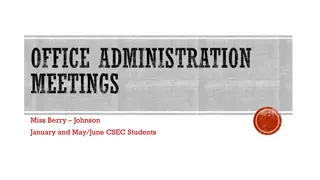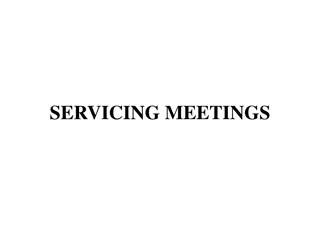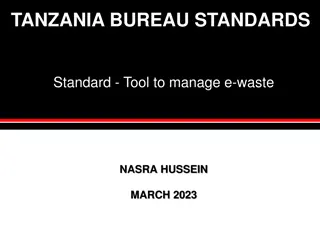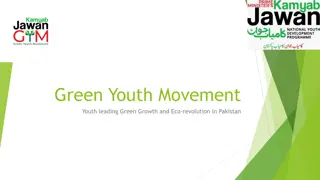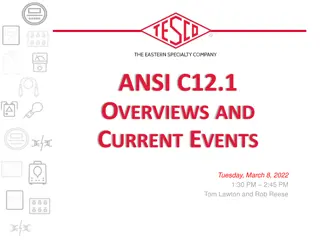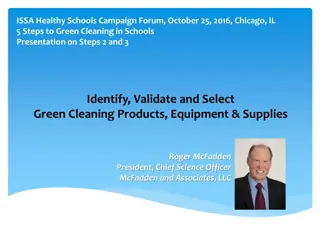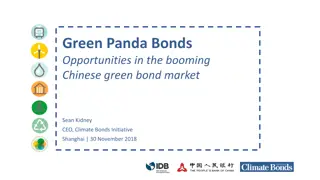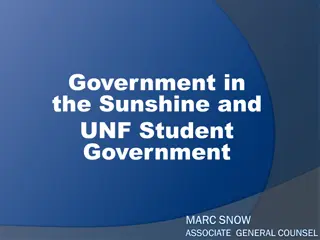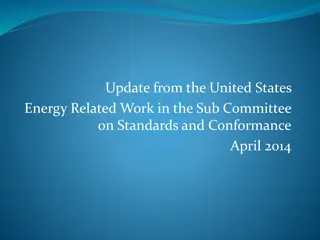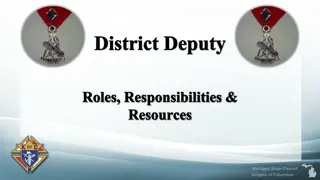Green Meetings Standards and Best Practices Overview
Green meetings aim to minimize environmental impacts and promote sustainability. The industry has set standards in collaboration with organizations like U.S. EPA and ASTM, covering areas such as accommodation, audio-visual, communications, destinations, exhibits, and food and beverage. These standards guide event planners and suppliers in organizing eco-friendly meetings to create a positive social and environmental legacy.
Download Presentation

Please find below an Image/Link to download the presentation.
The content on the website is provided AS IS for your information and personal use only. It may not be sold, licensed, or shared on other websites without obtaining consent from the author.If you encounter any issues during the download, it is possible that the publisher has removed the file from their server.
You are allowed to download the files provided on this website for personal or commercial use, subject to the condition that they are used lawfully. All files are the property of their respective owners.
The content on the website is provided AS IS for your information and personal use only. It may not be sold, licensed, or shared on other websites without obtaining consent from the author.
E N D
Presentation Transcript
Best Practices: Green Meetings Standards Kathryn Hashimoto School of Hospitality Leadership East Carolina University Greenville, NC hashimotok@ecu.edu
Introduction When any new industry begins to operate, there is always confusion as to the definitions and practices. Does green meetings refer to the practice of recycling waste or offsetting their carbon emissions or having a community association as a partner? One definition is green conventions or green meetings are conventions which are conducted in ways which minimize the environmental burdens imposed by such activities. However, the Green Meeting Industry Council says a green meeting incorporates environmental considerations throughout all stages of the meeting in order to minimize the negative impact on the environment." On a broader note, it can be defined as a "green" meeting that is organized and implemented in such a way as to minimize negative impacts on the environment and promote a positive social legacy for the host community. The green meetings industry needed a recognized set of guidelines to define acceptable levels of performance so that stakeholders as well as the general public could understand the importance and the practices.
Organization of Efforts As a result, the Green Meeting Industry Council partnered with the U.S. EPA and the international standards organization, ASTM, to develop standards to guide this new industry. In addition, the Convention Industry Council, whose members comprise the meetings associations, joined their efforts. An international panel of industry professionals made up of organizations that plan meetings (planners) and companies that supply services to meetings, such as hotels and convention centers (suppliers), were convened to develop the standards. Over the next five years, the APEX/ASTM Environmentally Sustainable Event Standards ASTM Green Meeting Standards for short were developed. The objective was to help others in the field understand what practices should be in place to produce a sustainable meeting
Standards The standards are divided into nine major areas of meeting production: 1. Accommodation primarily covers hotels and motels, but also can include bed and breakfasts, hostels or any facility that provides sleeping rooms. 2. Audio Visual encompasses sound, lighting and staging for events or meetings. 3. Communications is the term for anything that supports event communications, from the printed program and promotional materials to name badges and conference bags or giveaways. 4. Destinations involves any city or area that supports meetings, events or conventions. The standard only covers aspects of a destination as it relates to meetings/conventions. For example, it requires the city to support recycling and composting and have public transportation options to and from the airport and meeting locations.
Standards - cont 5. Exhibits includes the practices of the general service contractor who sets up the show, the show organizers and the companies that exhibit at the trade show. 6. Food and beverage encompasses any food and beverage that is served, whether the provider is a restaurant, hotel or independent caterer. 7. Meeting venue is any facility that house the meeting or event. The scope of the ASTM Green Meeting Standards addresses the operation of a facility as it relates to the delivery of a meeting. 8. On-site office examines the practices of the organization that produces the event while setting up and delivering the event. The standard includes using energy-efficient electronic equipment and ensuring staff participates in recycling efforts and sustainable practices. 9. Transportation covers attendee and staff travel to and from the event and any shuttle bus services provided to transport attendees from venue to venue.
Standards cont. Each of the standard's specifications is organized into eight categories. Four categories address policy practices such as staff management to ensure a sustainability policy is in place and staff is trained. Communications are ensuring the practices are communicated and methods follow sustainable practices. The community partners section has specifications that ensure local community support. Procurement encompasses purchasing and supply chain adoption. The other four deal with environmental specifications involving waste, energy, and water and air quality. Each standard has four levels of mastery, scaled from 1 to 4.
Results Who's using the standards? Planners and suppliers are starting to embrace the standards. Planners are required to be assessed for each meeting they produce, which currently makes reaching compliance more complex. As most meetings move from destination to destination and venue to venue, getting third-party assessments for each meeting is cost prohibitive Because suppliers represent a fixed venue or destination, it's easier for them to comply, and several have claimed the standard. The Colorado Convention Center in Denver was the first, followed by McCormick Place in Chicago, both of which earned Level 1 status. Then Venetian/Palazzo/Sands in Las Vegas achieved Level 2.
Conclusions The first meetings industry organization to publically share its compliance level and experience with using the standards is IMEX America, a well-known industry trade show with an attendance of more than 8,000. It managed to reach a compliance rate of 63 percent. Ultimately, the more suppliers can show consistent compliance with the standards, the easier it will become for planners to meet the specifications. It is important for fledgling industries to gain acceptance and recognition from the suppliers, planners, and the public at large. Creating international standards and definitions for the constituents to operate by, is an important first step in gaining acceptance by its stakeholders. Building standards is a very difficult and time consuming process. but a necessary one. These standards are definitely a best practice for the meetings and conventions industry.
